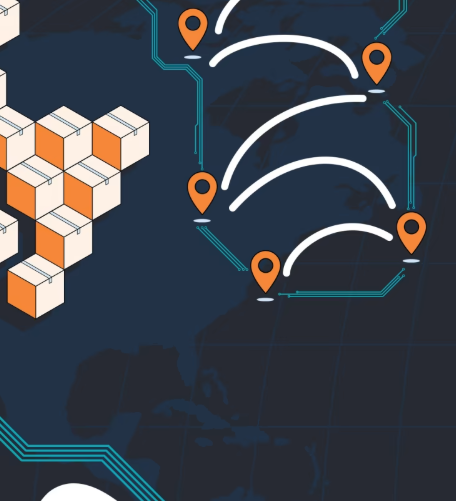
The Power of Smart Procurement in Supply Chain Management
In today’s fast-paced business environment, organizations are under constant pressure to run their supply chain operations more efficiently, ethically, and resiliently. With growing complexity and rising consumer demands, businesses need a smart approach to procurement to stay competitive. Smart procurement is a game-changing approach that leverages data, automation, and analytics to source goods and services effectively, transforming traditional procurement into a proactive, intelligence-driven function.
Let’s take a closer look at what smart procurement is, why it matters, and how businesses can incorporate it into their supply chains.
What is Smart Procurement?
Smart procurement integrates advanced technology and strategic decision-making into the procurement process, taking it beyond the traditional focus on cost control. This method allows supply chain managers to proactively manage operations, reduce risks, and enhance overall supply chain efficiency.
Key components of smart procurement include:
- Data analytics to monitor spending and track supplier performance
- Artificial Intelligence (AI) to predict demand and identify potential risks
- Machine learning to automate routine tasks
- Cloud-based platforms for seamless cross-department coordination
- Robotic Process Automation (RPA) for handling repetitive tasks like invoice approvals
- Sustainability tools to ensure ethical sourcing and compliance with ESG (Environmental, Social, Governance) standards
Unlike traditional procurement, which often reacts to situations as they arise, smart procurement anticipates needs and issues, using real-time data to guide decisions.
Benefits of Smart Procurement
Adopting smart procurement offers several advantages, helping businesses streamline their operations and strengthen their supply chains.
- Improved Efficiency and Cost Savings
By automating routine processes such as purchase orders and invoice matching, smart procurement minimizes manual errors and accelerates procurement cycles. These efficiencies lead to significant cost savings and free up teams to focus on strategic tasks like innovation and supplier management. - Strengthened Supplier Relationships
Smart procurement tools facilitate continuous supplier performance tracking and communication, fostering stronger, more collaborative partnerships. Real-time insights allow businesses to identify opportunities for cost reduction, innovation, and improvement in supplier relationships. - Effective Risk Reduction
With AI and predictive analytics, smart procurement systems can identify potential risks—whether they’re related to supply chain disruptions, compliance issues, or geopolitical events. By catching these issues early, businesses can proactively address challenges and maintain continuity in their operations. - Enhanced Sustainability and ESG Tracking
Smart procurement tools help businesses evaluate suppliers based on sustainability and ethical sourcing practices. These tools ensure that procurement decisions align with corporate responsibility goals, which is increasingly important to consumers, investors, and regulators. - Better Decision-Making
With real-time data and centralized insights, smart procurement enables faster and more informed decision-making. Whether it’s forecasting demand, evaluating supplier bids, or reallocating resources, the ability to act on actionable intelligence gives businesses a competitive advantage.
Implementing Smart Procurement
Adopting smart procurement isn’t something that happens overnight. It requires careful planning, technology investment, and a shift in organizational culture. Here’s how businesses can get started:
- Assess Current Procurement Maturity
Begin by understanding your organization’s current procurement capabilities. Is the process heavily manual? Are there gaps in visibility or efficiency? A maturity assessment helps identify where automation and digital tools can make the most impact. - Align Strategic Objectives
Determine your goals for smart procurement. Do you want to reduce costs, improve supplier diversity, or enhance agility? Aligning procurement with broader business objectives ensures that everyone in the organization is on the same page and working toward common goals. - Invest in the Right Technology
Choose platforms that integrate with your existing systems, like ERP or supply chain management tools. Look for technology that includes AI-driven sourcing, predictive analytics, automated workflows, and robust reporting capabilities. - Foster Cross-Functional Collaboration
Smart procurement thrives on collaboration across departments like finance, IT, supply chain, and legal. Early engagement from all stakeholders ensures alignment and a shared vision, making the transition smoother. - Train Your Team
Implementing smart procurement means equipping your team with the necessary skills to interpret data and collaborate with suppliers. Invest in training to maximize the potential of the new tools and processes. - Start Small and Scale
Consider starting with a pilot program focused on a specific area, like automating low-value purchases or digitalizing contract management. Once the pilot is successful, you can scale to other areas of the business.
The Role of Procurement in Supply Chain Optimization
Smart procurement is no longer just a back-office function—it is integral to optimizing the entire supply chain. It enables resilience, supports strategic sourcing, helps with inventory and demand planning, fosters innovation, and advances sustainability goals.
As businesses face the increasing pressures of agility, ethics, and resilience, smart procurement offers a decisive competitive edge. By implementing the right tools, strategies, and mindset, procurement can become a driving force behind operational excellence and supply chain success.
Conclusion
The future of procurement is here, and it’s smarter than ever. Companies that embrace smart procurement will not only streamline their operations but also enhance supplier relationships, reduce risks, and stay ahead of industry trends. With the right strategy, technology, and culture, businesses can ensure long-term success in an increasingly complex and competitive global marketplace.